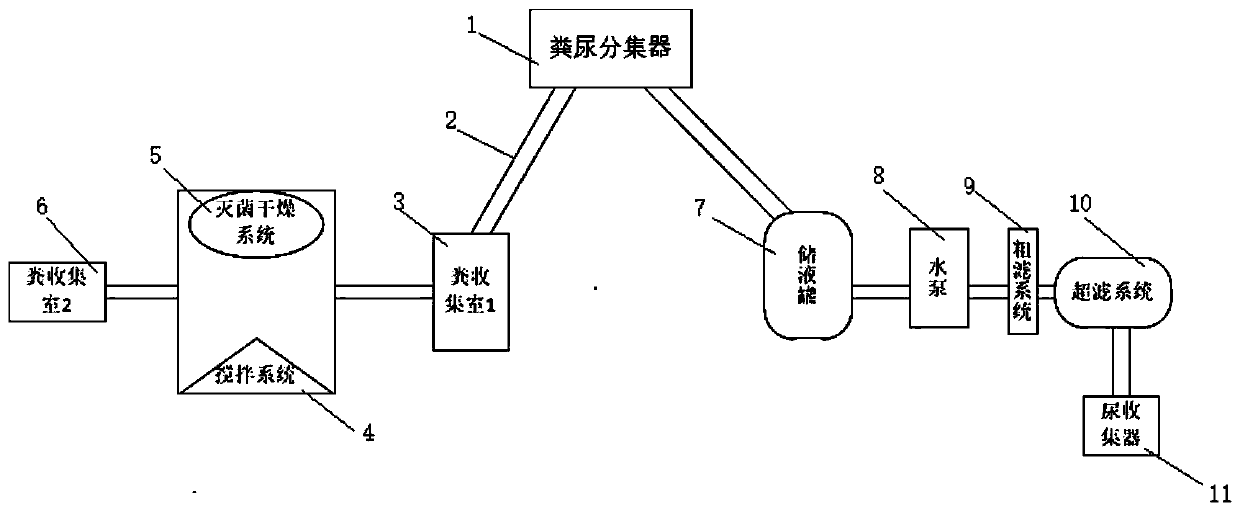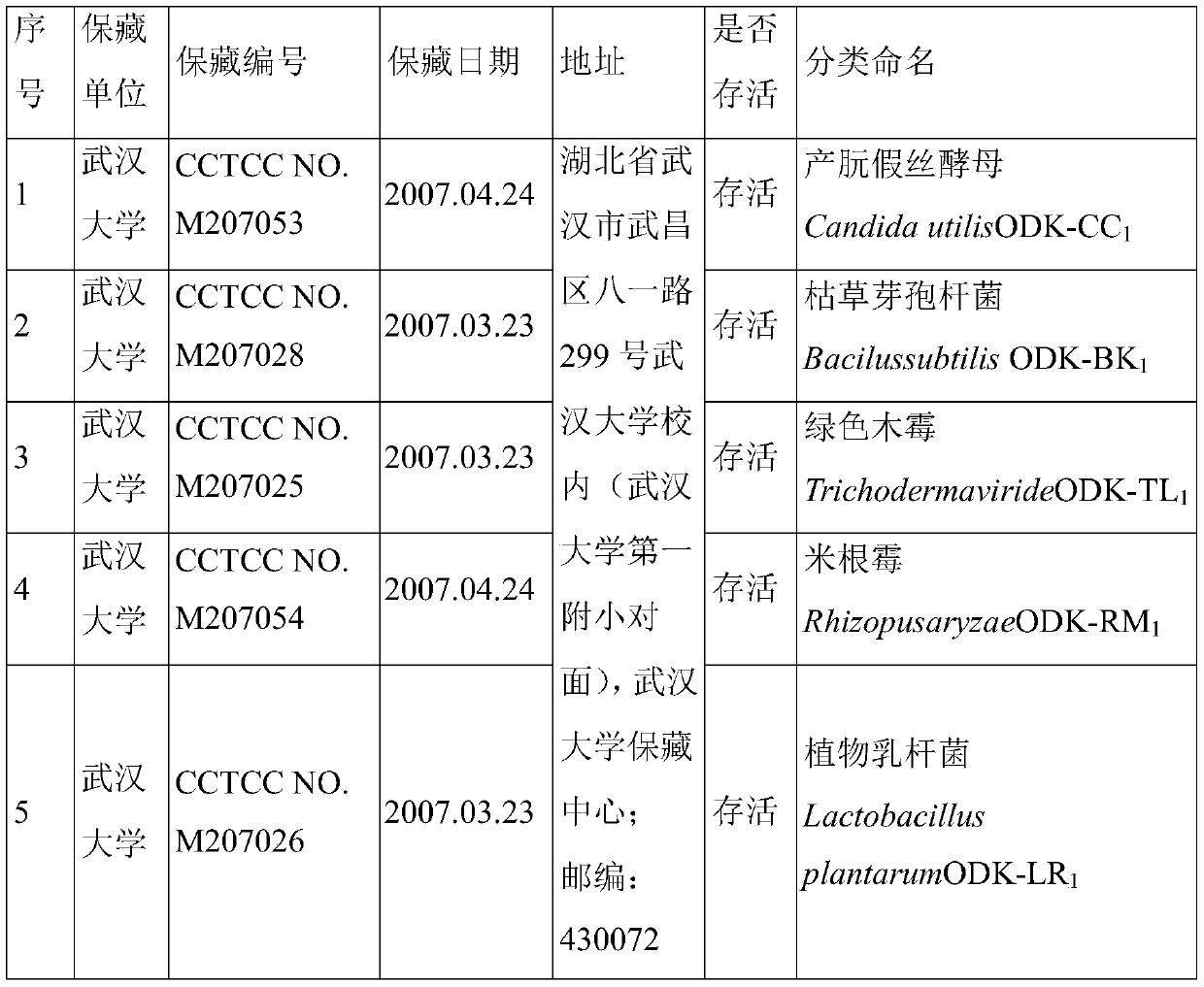Ecological health system for separation of feces from urine as well as application
A technology for separation of feces and urine and ecological sanitation, which is applied in the fields of ecological sanitation and environmental protection, can solve the problems of no filtration and purification of urine, no sterilization of stool, and inability to use directly, so as to eliminate the pollution of pathogenic microorganisms and nitrogen, The effect of improving urban and rural environmental sanitation and improving urban and rural sanitation
- Summary
- Abstract
- Description
- Claims
- Application Information
AI Technical Summary
Problems solved by technology
Method used
Image
Examples
Embodiment 1
[0038] urine test 1
[0039] Urine is a normal human metabolite after being secreted by the kidneys. The urine of normal people is a transparent, almost amber liquid without bacterial pollution. Its pH range is 5.5-7.5, and its ingredients are water, urea, and chloride ions , sodium ions and other inorganic ions. In this series of experiments, a variety of methods were adopted to process the urine. The experimental design is as follows:
[0040] method serial number Type of test method one Magnesium Ammonium Phosphate Precipitation Method Method Two Activated carbon adsorption method method three RO membrane technology method Method Four RO membrane technology method + activated carbon adsorption method
[0041] 1. Magnesium ammonium phosphate precipitation method
[0042] 1.1 Raw water source and water quality
[0043] The water samples used in the test were the primary urine of different adult males. The primary urine samples ① ...
Embodiment 2
[0064] urine test 2
[0065] The urine is filtered through the ultrafiltration system, and the filtered clear liquid can meet the national water use standard, and finally realize the reuse of water resources. In this embodiment, the ultrafiltration system adopts the combination of RO membrane and activated carbon.
[0066] 1. Sample Collection
[0067] The primary urine of different adult males was collected, and the primary urine samples ① and ② were obtained after collection and storage respectively. Among them, the pH value of sample ① is 6.7, and the ammonia nitrogen content is 9100 mg / l; the pH value of sample ② is 6.6, and the ammonia nitrogen content is 8920 mg / l.
[0068] 2. Test method
[0069] Connect the original urine sample ① and sample ② to the activated carbon filter element through the self-priming pump device, and then enter the RO membrane for filtration to obtain the filtered clear liquid sample ① and sample ②.
[0070] 3. Test results
[0071]
Embodiment 3
[0073] Fecal Disposal Test
[0074] This test mainly focuses on the drying of feces, deodorization, sterilization, fermentation of beneficial microorganisms, etc., and screens the best drugs and methods for the harmlessness of feces. The experimental design is as follows:
[0075] Test purposes experiment method dry Desiccant, high temperature dehydration deodorant Deodorant sterilization UV sterilization, high temperature sterilization
[0076] experiment method:
[0077] 1. Screening of desiccant and determination of addition ratio
[0078] 1.1 Sample source
[0079] The feces used in the test were adult male excrement, which were collected and stored separately to obtain the original sample ① and sample ②.
[0080] Among them, the water content of sample ① is 79.3%; the water content of sample ② is 51.5%.
[0081] 1.2 Test steps and results
[0082] Mix sample ① and sample ② fully first to obtain comprehensive sample ③, the water c...
PUM
 Login to View More
Login to View More Abstract
Description
Claims
Application Information
 Login to View More
Login to View More - R&D
- Intellectual Property
- Life Sciences
- Materials
- Tech Scout
- Unparalleled Data Quality
- Higher Quality Content
- 60% Fewer Hallucinations
Browse by: Latest US Patents, China's latest patents, Technical Efficacy Thesaurus, Application Domain, Technology Topic, Popular Technical Reports.
© 2025 PatSnap. All rights reserved.Legal|Privacy policy|Modern Slavery Act Transparency Statement|Sitemap|About US| Contact US: help@patsnap.com



